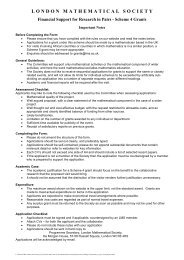The GPU Computing Revolution - London Mathematical Society
The GPU Computing Revolution - London Mathematical Society
The GPU Computing Revolution - London Mathematical Society
- No tags were found...
You also want an ePaper? Increase the reach of your titles
YUMPU automatically turns print PDFs into web optimized ePapers that Google loves.
A KNOWLEDGE TRANSFER REPORT FROM THE LMSAND THE KTN FOR INDUSTRIAL MATHEMATICS3Executive SummaryComputer architectures areundergoing their most radicalchange in a decade. In the past,processor performance has beenimproved largely by increasingclock speed — the faster the clockspeed, the faster a processor canexecute instructions, and thus thegreater the performance that isdelivered to the end user. Thisdrive to greater and greater clockspeeds has stopped, and indeed insome cases is actually reversing.Instead, computer architects aredesigning processors that includemultiple cores that run in parallel.For the purposes of this report weshall think of a core as oneindependent ‘brain’, able to executeits own stream of instructions,independently fetching the data itrequires and writing its own resultsback to a main memory. This shiftfrom increasing clock speeds toincreasing core counts — and thusincreasing parallelism — ispresenting significant newopportunities and challenges.During this architectural shift a newclass of many-core computerarchitectures is emerging from thegraphics market into themainstream. This new class ofprocessor already exploitshundreds or even thousands ofcores. Many-core processorspotentially offer an order ofmagnitude greater performancethan conventional processors, asignificant increase that, ifharnessed, can deliver majorcompetitive advantages.But to take advantage of thesepowerful new many-coreprocessors, most users will have toradically redesign their software,potentially needing completely newalgorithms that can exploit massiveparallelism.<strong>The</strong> many-coreopportunityFor computationally challengingproblems in business and scientificresearch, these new, highlyparallel, many-core architecturesrepresent a technologicalbreakthrough that can deliversignificant benefits in science andbusiness benefits. Such astep-change in available computingperformance could enable fasterfinancial trades, higher-resolutionsimulations, the design of morecompetitive products such asincreasingly aerodynamic cars andmore effective drugs for thetreatment of disease.Thus new many-core processorsrepresent one of the biggestadvances in computing in recenthistory. <strong>The</strong>y also indicate thedirection of all future processordesign — we cannot avoid thismajor paradigm shift into massiveparallelism. All processors from allthe major vendors will becomemany-core designs over the nextfew years. Whether this is manyidentical mainstream CPU cores ora heterogeneous mix of differentkinds of core remains to be seen,but it is inevitable that there will belots of cores in each processor, andimportantly, to harness theirperformance, most software andalgorithms will need redesigning.<strong>The</strong>re is significant competitiveadvantage to be gained for thosewho can embrace and exploit thisnew, many-core technology, andconsiderable risk for any who areunable to adapt to a many-coreapproach. This report explains thebackground to these developments,presents several success stories,and describes a number of ways toget started with many-coretechnologies.



